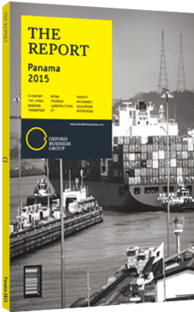Carlos Fernández, President, Chamber of Commerce, Industries and Agriculture of Panama: Interview

Interview: Carlos Fernández
What impact do free trade agreements (FTAs) have on local agriculture and livestock producers, and what strategies could help mitigate this?
CARLOS FERNÁNDEZ: Considering that food security has become a global priority, including for Panama, FTAs are essential for guaranteeing access to food for all citizens. These agreements are certainly beneficial, as they give Panamanian producers access they would not have otherwise had to other markets.
However, the local agriculture and livestock sector has not always faced fair competition from their counterparts in some of the countries with whom Panama has FTAs. Some imported products, such as rice and corn, are subsidised in their countries of origin. This brings down the costs for the producer and, ultimately, for the importer in Panama, hence competing with local products that are not subsidised in the Panamanian market. This can be a threat to guaranteeing food security; once those products are no longer subsidised, the cost to import them would increase significantly, thereby decreasing access to those products.
An additional challenge posed by FTAs is that tariffs for imported products are gradually decreased every year, as outlined by the agreements. Once again, this puts the local producer in a situation where it is no longer profitable to compete with foreign products.
In order to tackle the impact of subsidised foreign products and shrinking import tariffs, local producers must be incentivised to continue producing. Without incentives, the sector will continue to contribute below 2% to the country’s GDP, as opposed to the 20% seen 20 years ago. It is also necessary to provide the sector with the latest technology, which will enable more efficient labour. To that end, a collective effort is needed to take advantage of the opportunities FTAs offer to local producers by improving their efficiency.
There is an initiative in place, led by the minister of agriculture and livestock, to give producers the resources they need to identify which products to incentivise where and how, in order to boost competitiveness and efficiency in the international market. With locally produced, better quality and cheaper products, and given the ideal climate and soil conditions Panama offers, Panamanian products can promote food security while also having the quality needed to compete elsewhere.
How can public-private partnerships contribute to agriculture, and what more needs to be done?
FERNÁNDEZ: Partnerships between the public and the private sector are key for the development of agriculture and livestock in Panama. The private sector has the will to invest in it, but there needs to be guidance from the government through a national strategy.
To what extent would improved infrastructure minimise losses within the cold chain, and what other infrastructure developments are required?
FERNÁNDEZ: When analysing the performance of the cold chain, one must not forget that this is a relatively new project that was only inaugurated during the first half of 2014. As such, losses should be seen as normal and not necessarily associated with the quality of the infrastructure. In terms of the infrastructure needs of the agriculture and livestock sector, one must always keep in mind that food security is a top priority for the country. This is an environment where land is becoming more expensive, combined with an overall increase in the cost of living due to inflation. As such, guaranteeing greater access to land and thereby bringing down land costs is imperative.
Panama has large areas of land that are undeveloped and could be produced cost effectively; however, there is still a need for improved infrastructure to allow for better land penetration. These new lands should be located near water resources in order to guarantee access, which will require the appropriate accompanying water infrastructure. The more land that is claimed, the more irrigation systems will be needed. Lastly, better road infrastructure is crucial for reducing the distance between agricultural land and urban centres.
You have reached the limit of premium articles you can view for free.
Choose from the options below to purchase print or digital editions of our Reports. You can also purchase a website subscription giving you unlimited access to all of our Reports online for 12 months.
If you have already purchased this Report or have a website subscription, please login to continue.

